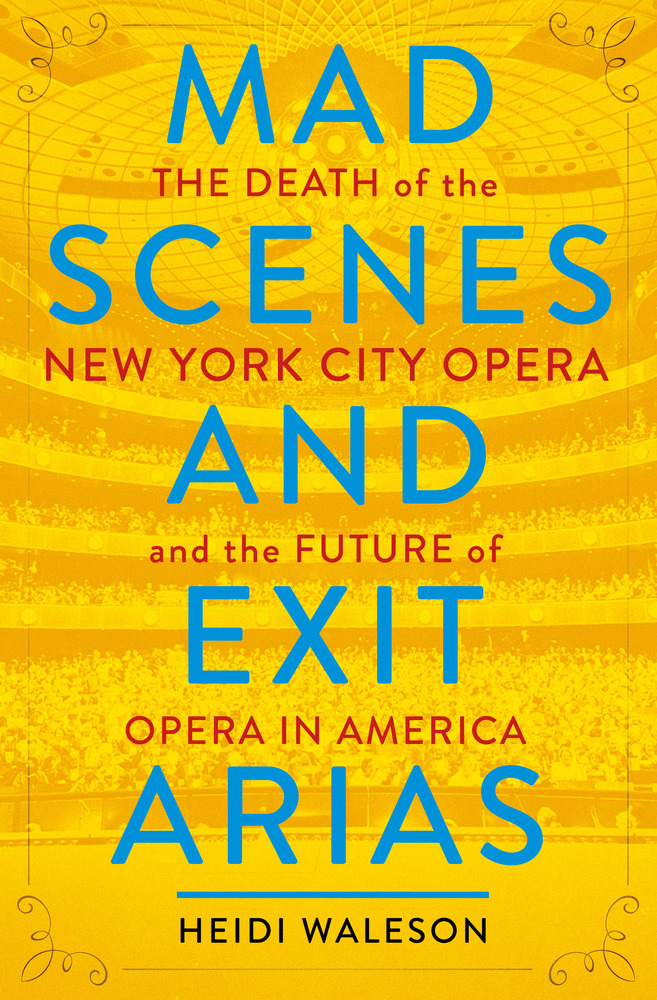by Daniel Hathaway

Author Heidi Waleson is eminently qualified to address the history of NYCO as well as the state of opera in America. The daughter of opera-loving parents (who waited out what she calls her “teenage apostasy in the church of Joni Mitchell”), Waleson began attending and writing about City Opera soon after moving to New York in 1979, and became the opera critic for The Wall Street Journal in 1985. She is intimately familiar with the company’s artistic product, having reviewed a vast number of productions over the decades, and her skills as an investigative journalist serve her well when she goes behind the scenes to unpack the details of interpersonal relationships, board decisions, and finances.
The story of City Opera is itself an opera. Its colorful cast of characters revolves around its most prominent directors — founder Laszlo Halasz (1943-1951), Julius Rudel (1957-1979), Beverly Sills (1979-1988), Christopher Keene (1989-1995), and most recently, Glimmerglass Opera founder Paul Kellogg (1996-2007), Gerard Mortier (hired but never served), and George Steel (2009-2013). Behind the scenes, side dramas involve board members, especially the autocratic hedge fund manager Susan Baker, who wooed both the expensive and overqualified Mortier and the inexperienced Steel — both with disastrous results.
And there are many subplots. The company’s vacillations between its “not The Met” mantra and its tendency toward mission drift, especially after being pressured into moving to Lincoln Center right next to its big brother. The shifts back and forth between producing stagione and repertory opera. The move to subscription sales as organizations got on the Danny Newman bandwagon, and the company’s later failure to notice the changing demographics of an audience that no longer made plans long in advance. The expensive and distracting edifice complex that set the company on a quest to build its own theater. The upheavals of the AIDS crisis (that claimed the life of Christopher Keene), of 9/11 (which coincided with a big gala and the opening of the company’s 2001 season), of the financial crisis (that took a huge bite out of a dwindling endowment), and of Hurricane Sandy (which destroyed offices, records, and production materials).

Along the way, Waleson finds many opportunities to contrast City Opera’s operations with innovations by other regional companies, most of which sprang up during NYCO’s 70-year history. Some of those ideas have worked, others not so well, and a number of companies who depended on only a few non-renewable income sources have disappeared. Now that entities like the Ford Foundation, which bankrolled one of City Opera’s big growth spurts, have turned their largesse elsewhere, and audiences have gravitated toward other forms of entertainment, the book ends with a big question mark about the future. Waleson remains optimistic:
The crucible of the last fifteen years has produced some strong leaders who are remaking the institutions and tweaking the four-hundred-year old art form so that it can survive and thrive for another century. It will be up to them to capture the imagination of the next generation of opera lovers with the artistic verve and adventurous spirit that exemplified the old City Opera at its finest.
In fact, City Opera still exists, having been once again resurrected three years after its bankruptcy filings. As I was finishing reading Heidi Waleson’s engaging book, my email client dinged and I noticed a Musical America job description for development director of New York City Opera. It started out: “with its rebirth in 2016, NYCO continues its historic mission to inspire audiences with innovative and theatrically compelling opera, nurture the work of promising American artists, and build new audiences through affordable ticket prices and extensive outreach and education programs.”
There will be a sequel.
Published on ClevelandClassical.com December 13, 2018.
Click here for a printable copy of this article



